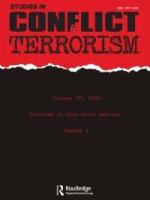Transnational jihadi movements
In a newly published article in The Oxford Research Encyclopedia of Religion, Sheikh and El-Jaichi take up three different perspectives to describe the phenomenon of transnational jihadi movements, focusing mainly on the evolution of al-Qaeda (AQ) and AQ in Iraq (which later evolved into ISIS).
First, they conceptually define what is meant by transnational jihadism and highlight diffferent formal characteristics of the movements: Their ideologization of jihad, their resistance against external intervention, their network-like nature, and the fact that their demands and aims transcend national borders and that their interpretations of religious warfare expand the concept of jihad beyond the boundaries of a nation-state.
Second, they take on a historical lense, and retrace the multitiered and continually evolving phenomenon of global jihad - starting from the backdrop to Islamic revivalism in the late 1960s, the Iranian Revolution and the Red Army’s invasion of Afghanistan in 1979 and following it through its development organizationally and ideologically in light of both internal and external world events.
The article also dwells on the establishment of the lSIS caliphate in large parts of Syria and Iraq in June 2014, which caused the split with the old AQ and created hostilities and personal enmities which lasted until Islamic State lost its territorial control in 2018. Sheikh and El-Jaichi emphasize how regional developments created new alliances and divisions within the global jihad movement, and particularly how the Arab Spring after 2011 marked a turning point in the history of modern jihadism.
The third focus in their article is ideational, and they analyze the similarities and differences between AQ and ISIS over questions of strategy and tactics and explain the impact these differences have on the organizations’ respective worldviews in matters relating to the rules of jihad, the objective of armed struggle and, in some cases, the legitimacy of different types of warfare.
Sheikh and E-Jaichi show how the worldview of transnational jihadi movements is framed and defined by the geopolitical events that took place in the Middle East from the 1960s onward. The movements appear with a defensive anticolonial ethos against foreign intervention and interference, but also with offensive ambitions of establishing a transnational caliphate.
Though Islamic State has a sectarian agenda largely defined against Shia Muslims, both contemporary movements are driven by the belief that God’s sovereignty is threatened, that the United States and the West are an enemy of Muslims along with apostate Muslim regimes, and that Islam needs to be purified from disbelief.
Tactical and interpretive differences regarding the definition of disbelief, the right timing of establishing the caliphate, and fighting the near enemy (apostate regimes) or the far enemy (the United States and the West) have caused divisions among the transnational jihadi movements.
DIIS Experts







